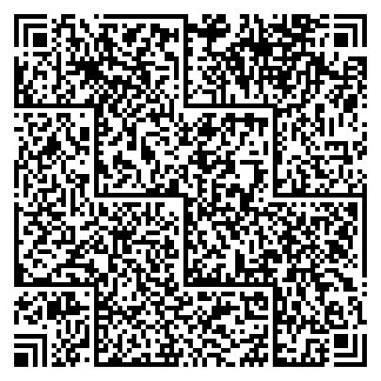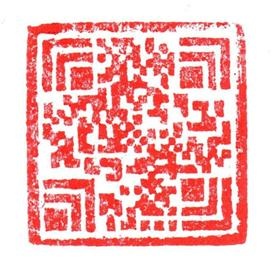Chinese market opportunities for Han Xin Code

By Shi Yu, CEO of Beijing REN JU ZHI HUI Technology Co. Ltd.
Han Xin Code, a two-dimensional barcode from China, was announced by AIM Inc., the trade association recognized as the worldwide authority on automatic identification and mobility, to be one important member of AIM’s specification family in 2011.
As one of the inventors of this symbology, the key supporter and major promoter of this specification, I wish to share some designing ideas, market analyses, promoting points of Han Xin Code, especially for Chinese AIDC market.
Han Xin Code was designed in 2005. It is a result of a key research of tenth Five-Year Plan (Chinese National Technical Researching and Developing Program). The Chinese National Standard of Han Xin Code was published in 2007. It has been 6 years since it was in the cradle. When we designed Han Xin Code, the target of this symbology was set to “the National two-dimensional (2d) barcode symbology of China”.
For designing, developing and standardizing Han Xin Code, we hope to provide not only a useful 2d barcode technology to Chinese industries, but also new market opportunities to all over the world.
Chinese market opportunities for AIDC industry
In China, there are many directions of 2d barcode applications. And based on our experiences and observations, next 5 to 10 years must be the best or golden developing period for AIDC technologies, especially for 2d barcodes such as Han Xin Code.
First of all, paper-based documents applications, such as legal documents, application forms, government files, contracts, invoices, receipts, etc., will be the major direction or mode for Chinese AIDC technology. In China, we have been developing information technology applications for more than 10 years. Almost every government department, organization and company has been paying great deal of money, time and resources to develop and build their own information platforms and applications. And moreover, we have found these information platforms and applications cannot effect the place of paper-based documents in every Chinese heart. The usage of paper in personal life, business activities and governmental processes has been nearly 2000 years in China. In the eyes of the Chinese nation and each Chinese person, paper is a popular and acceptable method and also the only solution in our daily lives. And, in our experiences, it is not in the same way as in the United States, European countries and other parts of the world. We also would like to use some fashionable information technology to make our lives easy and convenient. But, considering generations from our parents to us, almost all of our parents’ generation and about 90 percent of our generation are familiar with and like to and have to use paper-based approaches instead of digital approaches, when we involve in school, tax, bank and other processes in our everyday life, business and social life, governmental life respectively. We should know that these generations are the major formation and basic structure of our population in next 30 to 50 years. So, in China, we have found a very interesting situation: even though there is a digital method for one thing, there must be a paper-based method for that too. And paper-based methods are mostly used and required for accuracy, but digital methods may not be useless at all and may be different and inaccurate in the requirements. This has been involving in our past, present and future laws and processes. And I think the paper method will not be replaced in next 10, 20 or even more years. It is the actual conditions and facts for us to promote information systems in China. And the ways and methods used in the United States or European countries may not be applicable and suitable for China.
Second, just as I have mentioned above, since 1999, China has built a lot of information systems. If we investigate into these systems, we could find they are provided by thousands of information technology or solution companies. The systems are not designed in interconnected, interoperable, interactive ways. These systems may use different encodings, character sets, data carriers or business logics for the same business process. So, today, we must face big problems of integrating these systems together to solve our governmental, business and social problems and to meet our needs. Even in one business process or one step of this process, the interfaces and systems are not designed with connective capability or integrated capability. How could we realize these capabilities? The most popular way is to use paper-based documents, and hire as many persons as possible to input the same data in each system. It is absolutely a huge waste of time and money. But this also provides a golden opportunity for AIDC, especially 2D barcode technologies in Chinese market. According to our observations, in recent years, more and more Chinese government departments, organizations, companies and people want to pay money to find easy ways to solve these input problems. But they do not want to adjust, rebuild or use a new system to replace the old process (paper-based process). So, AIDC technologies based on papers will play an important role in the processes of building our national connective information society and future Internet of Things platforms.
Third, China is one of the largest manufacturing countries of the world. Chinese market is one of the largest consumer markets of the world. According to the twelfth Five-Year Development Plan of China, our country will make great efforts to optimize our industrial structure and upgrade the level of manufacturing industry. So, the first and most important step is to improve our industries’ automation manufacturing level, and to optimize our supply chains’ integrated management capability and performance. This must lead to great challenges to information technologies and solutions. Our AIDC industry, such as barcode, 2d barcode, DPM (Direct Part Marking), RFID, NFC (Near Field Communication), etc. will take their advantages.
Furthermore, there are many other market opportunities that I don’t mention here.
What do these mean to Han Xin Code?
I think Han Xin Code would become one important way and the key to enter Chinese market, and help our AIDC companies all over the world for taking their respective advantages in China.
their respective advantages in China.
Firstly, for Chinese market, paper-based application mode, which we are almost using everywhere, leads to the demands of 2d barcode solutions. QR Code and Data Matrix are also very suitable. We can see more and more 2d barcode applications are appearing in China, such as mobile shopping, mobile ticketing, price parity of products, and so on. But, if we want to promote 2d barcode applications further and deeper in Chinese industries, we would find most of these industries and business opportunities have governmental or political conditions that must be considered. The sense of allegiance to China and Chinese nation has a history of more than 2,000 years. And this sense of allegiance has been integrated into each Chinese people’s blood. In China, it is better and easier to promote applications and technologies which have national characteristics rather than other ones. Han Xin Code would be easier accepted by local decision-makers of our local companies, our local organizations and our government departments. And it would be more probable for them to choose Han Xin Code as our nation’s, country’s and industries’ 2d barcode solution. Han Xin Code, as Chinese national 2d barcode technology, will provide opportunities for both China and world.
Secondly, Han Xin Code is designed based on Chinese language and information. On one hand, just as I have mentioned, after more than 10 years' information systems building process, there are more and more demands for Chinese market to realize connectivity for these systems. And, on the other hand, this connectivity is not simply based on rebuilding or adjusting current systems, applications or processes. Hence, in the next 10 to 20 years, Han Xin Code could become an essential bridge among information systems and applications, which are now used in China and have paper-based information exchanging and interfacing solutions.
Thirdly, when we designed Han Xin Code, we promise to devote ourselves to it. Han Xin Code has strong technical supports both in China and all over the world. Considering the applications for Chinese manufacturing markets, many Chinese manufacturing industries have expressed their needs for Han Xin Code manufacturing applications, especially for DPM. And just before my trip to Las Vegas, Han Xin Code started its proving process for DPM. We are using more than 100 computing processors and more than 300 tasks for this proving job. Since we designed and standardized Han Xin Code, we have been using several high performance scientific computing methods to give Han Xin Code strongly enough technical supports and theoretical guarantees. Meanwhile, in AIM Global’s Han Xin Code specification, there are standard encode and decode programs to help companies all over the world to develop their own devices and softwares, which support Han Xin Code.
Finally, Han Xin Code is a develop-able and design-able 2d barcode symbology. In our plan, Han Xin Code will soon support GS1 mode. And in the near future, Han Xin Code will have its Internet of Things and other application modes and standard encryption/security algorithms. Han Xin Code will become one of the most important and recommended data carriers for Chinese market and also for the global market.
Chinese applications of Han Xin Code
There are many successful applications of Han Xin Code in recent years. On a small scale for education area, Han Xin Code has been used for 3 years in Beijing Contest District of China Undergraduate Mathematical Contest in Modeling. It helps to decrease 2/3 of the workload in the organization of this contest. On a large scale, Han Xin Code is used in our national taxes systems as a useful input method and authenticated way on the Chinese national taxes invoices. And probably in next 1-2 years, Han Xin Code integrated with standardizing encoding systems, such as GS1, will be applied in many industrial directions.
Along with the blossoming of Han Xin Code, our Han Xin Code team from my company, GS1 China and AIM China would like to share our experiences and market opportunities of Han Xin Code with the whole AIDC community and companies all over the world.
Shi Yu
CEO of Beijing REN JU ZHI HUI Technology Co. Ltd.
Website: http://renjuzhihui.com/
Phone: +86 18611830366
Related articles:
QR Codes - Everything you always wanted to know*
YouTube Video's that illustrate how to make labels and bar codes:
Create a QR Code for business cards
Make sheets of bar code labels
{jcomments on}
